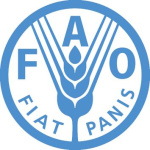- Industry: Agriculture
- Number of terms: 87409
- Number of blossaries: 0
- Company Profile:
Established in October 1945 with the objective of eliminating hunger and improving nutrition and standards of living by increasing agricultural productivity, FAO coordinates the efforts of governments and technical agencies in programs for developing agriculture, forestry, fisheries, and land and ...
The process of self destruction of a cell, cell organelle, or tissue. It occurs by the action of lysosomic enzymes.
Industry:Biotechnology
The process of synthesizing multiple copies of a particular DNA sequence using a bacteria cell or another organism as a host. The gene of interest is inserted into a self-replicating DNA molecule (DNA vector, often a plasmid) and the resulting recombinant DNA molecule is amplified in an appropriate host cell. Used in genetic engineering. a.k.a. molecular cloning; cloning.
Industry:Biotechnology
The process that commences with searching for markers linked to a particular inherited trait, then using those markers to identify the approximate location of the gene responsible for the trait, and then using various cloning strategies (including chromosome walking, q.v.) to identify, isolate and characterize the gene. Originally, the strategy was called <i>reverse genetics</i>, a term that some consider to be a misnomer and misleading.
Industry:Biotechnology
The process where two cells (gametes) fuse to form one fertilized cell or zygote. <i>cf</i> asexual reproduction; gamete; hybrid.
Industry:Biotechnology
The process whereby a transposon or insertion sequence inserts itself into a new site on the same or another DNA molecule. The exact mechanism is not fully understood and different transposons may transpose by different mechanisms. Transposition in bacteria does not require extensive DNA homology between the transposon and the target DNA. The phenomenon is therefore described as illegitimate recombination.
Industry:Biotechnology
The process whereby DNA makes exact copies itself, under the action of and control of DNA polymerase.
Industry:Biotechnology
The processes, including the synthesis of antibodies, that are used by vertebrates to respond to the presence of a foreign antigen.
Industry:Biotechnology
The product of inbreeding, i.e., the mating of individuals that have ancestors in common; in plants and laboratory animals, it refers to populations resulting from at least 6 generations of selfing or 20 generations of brother-sister mating, that are for all practical purposes, completely homozygous. In farm animals, the term is sometimes used to describe populations that have resulted from several generations of the mating of close relatives, without having reached complete homozygosity.
Industry:Biotechnology
